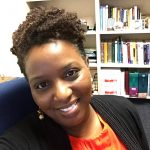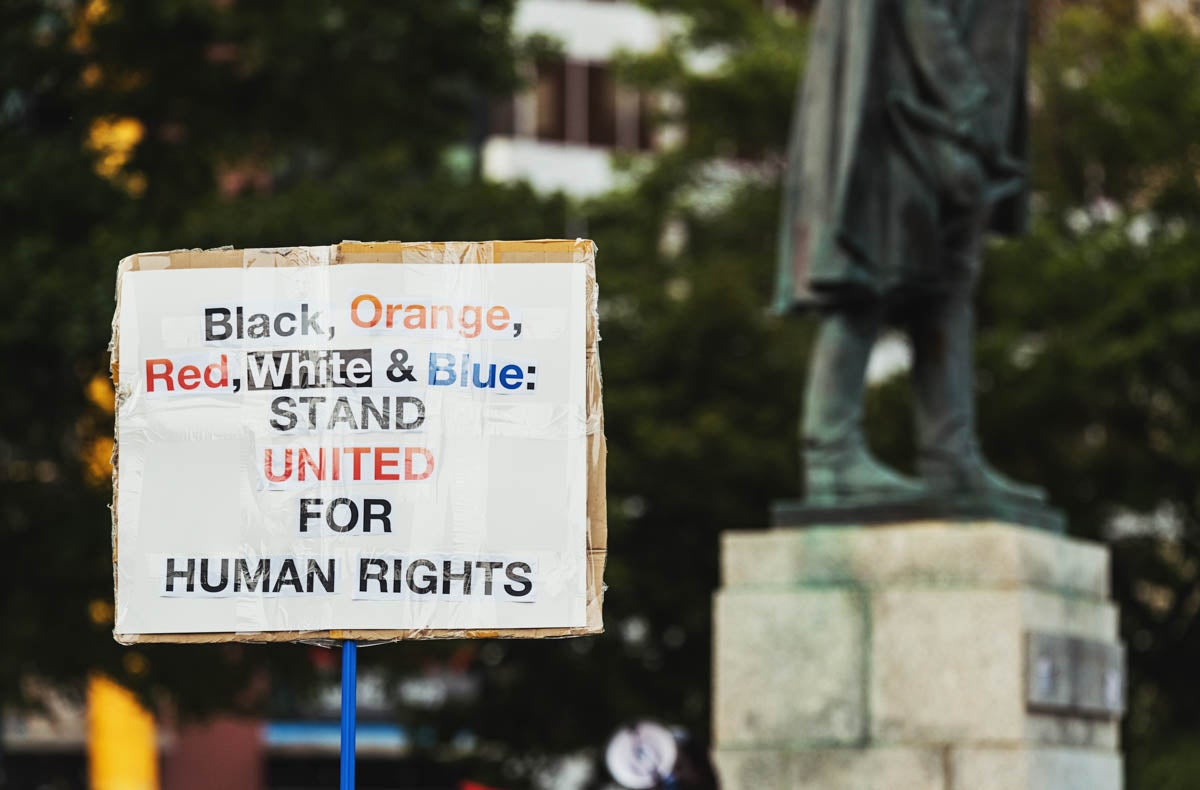I started my career in 1998 as a 23-year-old high school teacher fresh out of college. I took a position at a school in a city that neighbored my hometown of Virginia Beach, Virginia, and began teaching world studies and U.S. history to freshmen and juniors.
My memories from that first year include nervousness about running my own classroom, the pressure of end-of-course tests, excitement when my students “got it,” and many funny moments, like the student who accidentally called me “mom” multiple times.
What stands out the most among these memories is April 21, 1999, the day after the shooting at Columbine High School. On this day, in a school full of shock and fear, I stood before my students and tried to convince them that their school was a safe place, that we would all be OK. I would do the same thing on September 12, 2001, the day after terror attacks rocked our nation.
Nearly 20 years later, I find myself again bearing the responsibility of helping students make sense of tragedy. This time my words are for adult students who have committed to serving others as future counseling professionals. And this time the conversation is deeply personal.
When I teach the Foundations of Multicultural Counseling course to our graduate counselor education students, I position myself as the instructor on the first day. This means that I draw attention to the obvious—that I am a Black woman. I state it plainly and go on to explain that my identification as both Black and woman matters as I walk through the world. I see and engage with the world in a particular way because I am a Black woman and I have learned how others see and perceive me when I enter spaces, wherever those spaces might be. I do this to help them understand their own social locations in the world.
It is my identity as a Black woman that makes the recent conversations I am having with my students both personal and layered.
It is my identity as a Black woman that makes the recent conversations I am having with my students both personal and layered. As their instructor, I have a responsibility to engage them around difficult topics related to the marginalization and oppression of various groups in our country. I challenge them to reflect on their privileges to better understand racism, sexism, homophobia, transphobia, and xenophobia so that when they enter schools, communities and agencies they will operate as culturally informed and responsive counselors for a diverse clientele. My colleagues in counselor education, psychology and social work know that this is labor, and that the labor is made more intense when we ourselves are marginalized at the intersection of race and gender.
I welcome the responsibility of engaging my students around what some would call controversial topics; however, I do so while also carrying a personal and collective history of racist experiences.
I remember watching the miniseries Roots: The Saga of an American Family as a child. It seemed to air every year during Black History Month, and my parents encouraged my sister and me to watch it. We knew about American slavery—I assume it had been taught in our school, but I know it was taught in our home. Roots gave me a visual that made the history that I had learned real and visceral.
When I say that I remember watching Roots, I really mean that I remember trying to watch it. Every year I would accept my parents’ invitation to engage in this seminal piece of historical media because I knew it was something that I needed to see. I would watch, and without fail, I would become increasingly uneasy with the sights and sounds of the cruel and “peculiar institution” of slavery. With each scene of brutal and dehumanizing treatment of people who looked like me I grew sadder and sadder.
Even at a young age I felt connected to Black people of different times and places. I had soaked in information and images from encyclopedias and boxsets of books on the various people of the world.
I connected with Africa—it was my root and its people were my people. As a child I felt this. So, in seeing my people kidnapped, chained, crammed into ships as cargo, and auctioned as things, I saw myself. I saw the humanity in every Black face deemed “property,” and my heart couldn’t take it. Every year I would try to watch the entire miniseries, and every year I would weep deeply and leave the room. I just could not watch.
My heart hurt, and more than that, my mind could not make sense of what I was watching. I would ask with intense brokenness “How can humans do this to other humans?”
When the video footage of George Floyd’s death at the hands of law enforcement officers hit the media, I could not watch it. I watched the brutal beating of Rodney King in 1991. I saw Michael Brown’s body lying in the street for hours as if he were a discarded animal carcass. I watched as Philando Castile died in front of his daughter and partner. My body jolted when I saw the video of Alton Sterling being shot at close range by police. I screamed and wept when I saw Atatiana Jefferson shot to death in her own home when officers responded to a call for a wellness check by one of her neighbors. To know that Breonna Taylor suffered the same fate broke my heart and enraged me at the same time.
Racism, whether it is individual or institutional, makes me sick.
I have carried these images of violence in my mind and heart, and they literally make me sick. Racism, whether it is individual or institutional, makes me sick. I have yet to get the answer to the question I asked as a child every February after another failed attempt at finishing Roots. So, I struggle to be present for my students who have similar feelings and questions.
The nationwide demonstrations of the past week encapsulate the intense pain and anger that are carried by millions of Black Americans every single day. And when I say “carried,” I do not mean metaphorically. We are literally carrying the weight of our emotions in our bodies, on a cellular level. As activist Fannie Lou Hamer said, we are “sick and tired of being sick and tired.”
Last weekend as demonstrations intensified, I was not OK. Saturday morning, I emailed my students to let them know that they were on my mind and that we would take time on Monday to make space for them to share and process their thoughts and feelings. On Monday evening, we logged into our Zoom classroom and engaged in our regularly scheduled content. Then we officially ended class and I opened the floor for students to share authentically.
Students were invited to remain on the call but were not required to do so. To set the tone for the space, I reminded everyone that in our challenging times it is important to prioritize the voices most affected by the racialized tragedies that have occurred recently. Marginalized voices always fight to be heard, and I did not want them to have to fight in this space.
I knew that the space was needed, but I was surprised when most of the class remained on Zoom for more than an hour as the Black students in our class shared their sadness, rage, and fear. They shared race-based experiences with both law enforcement and fellow citizens that illustrated how frightening and dangerous it is to be Black in America. The emotions were raw and needed to be expressed. They also needed to be heard. Students in the class who do not identify as Black listened and held space for their peers. They wrote words of support and empathy in the chat and honored the vulnerability of their fellow future counselors.
We are hurting. Black Americans are hurting. Your colleagues and students are hurting.
America is hurting.
The wounds are deep and raw. They have been inflicted over centuries through racist economic institutions (read: slavery) and racist policies in education, housing and criminal justice. They are borne out in health, economic and educational disparities that are unduly cast as individual inadequacies and poor choices. They thrive on silence, inaction and diversion.
Their only salve is loud, active anti-racism.
Here at UCF, the salve looks like leadership that is vocally committed to anti-racism.
It looks like hiring practices that attract and retain faculty and staff that are not only diverse, but also anti-racist in their work. They are anti-racist in their engagement with students and colleagues. They are anti-racist in their research. They are anti-racist in the construction of their syllabi and the delivery of their course content.
The salve also looks like students who are committed to anti-racism in their relationships with each other as well as with faculty and staff.
I love what I do. I was born to do this work, and my students inspire me to continue. Still, the burden is heavy.
This is part of a series of columns on race and racism written by members of the UCF community.
 J. Richelle Joe is an assistant professor in the counselor education program, where she trains students to become professional counselors. She also serves as the outreach coordinator for the Community Counseling and Research Center and is the faculty lead for the HIV Education, Awareness and Research Team (HEART).
J. Richelle Joe is an assistant professor in the counselor education program, where she trains students to become professional counselors. She also serves as the outreach coordinator for the Community Counseling and Research Center and is the faculty lead for the HIV Education, Awareness and Research Team (HEART).





